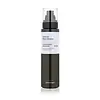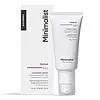What's inside
What's inside
 Key Ingredients
Key Ingredients

 Benefits
Benefits

 Concerns
Concerns

 Ingredients Side-by-side
Ingredients Side-by-side

Water
Skin ConditioningMethylpropanediol
SolventGlycerin
HumectantCaprylic/Capric Triglyceride
Masking1,2-Hexanediol
Skin ConditioningPropanediol
SolventPolyglycerin-3
HumectantNiacinamide
SmoothingPhenyl Trimethicone
Skin ConditioningAmmonium Acryloyldimethyltaurate/Vp Copolymer
Butylene Glycol
HumectantSodium Acrylic Acid/Ma Copolymer
Pentaerythrityl Tetra-Di-T-Butyl Hydroxyhydrocinnamate
AntioxidantXanthan Gum
EmulsifyingMacadamia Ternifolia Seed Oil
EmollientHydrogenated Lecithin
EmulsifyingEthylhexylglycerin
Skin ConditioningAdenosine
Skin ConditioningCarbomer
Emulsion StabilisingDisodium EDTA
Tromethamine
BufferingPolyglyceryl-10 Laurate
Skin ConditioningSodium Hyaluronate
HumectantCholesterol
EmollientTocopherol
AntioxidantBrassica Campestris Sterols
EmollientRetinal
Skin ConditioningAscorbyl Tetraisopalmitate
AntioxidantPotentilla Anserina Extract
Skin ConditioningCaprylyl Glycol
EmollientAluminum/Magnesium Hydroxide Stearate
Emulsion StabilisingPolyquaternium-51
Skin ConditioningCynara Scolymus Leaf Extract
Skin ConditioningAvena Sativa Kernel Extract
AbrasiveBeta-Glucan
Skin ConditioningPotassium Cetyl Phosphate
EmulsifyingCamellia Sinensis Leaf Water
MaskingPiper Methysticum Leaf/Root/Stem Extract
Skin ConditioningSodium Ascorbyl Phosphate
AntioxidantCentella Asiatica Extract
CleansingFicus Carica Fruit Extract
HumectantCeramide NP
Skin ConditioningCentella Asiatica Leaf Extract
Skin ConditioningSaccharomyces Ferment
Skin ConditioningCentella Asiatica Root Extract
Skin ConditioningCanola Oil
EmollientMyristyl Alcohol
EmollientPCA
HumectantAcetyl Hexapeptide-1
Skin ConditioningAsiaticoside
AntioxidantMadecassoside
AntioxidantDaucus Carota Sativa Seed Oil
EmollientBifida Ferment Lysate
Skin ConditioningLactobionic Acid
BufferingDaucus Carota Sativa Root Extract
Skin ConditioningTocopheryl Acetate
AntioxidantBeta-Carotene
Skin ConditioningHelianthus Annuus Seed Oil
EmollientPanthenol
Skin ConditioningPolygonum Cuspidatum Root Extract
AntioxidantSucrose Distearate
EmollientHydroxypropyl Cyclodextrin
MaskingMadecassic Acid
Skin ConditioningAsiatic Acid
Skin ConditioningWater, Methylpropanediol, Glycerin, Caprylic/Capric Triglyceride, 1,2-Hexanediol, Propanediol, Polyglycerin-3, Niacinamide, Phenyl Trimethicone, Ammonium Acryloyldimethyltaurate/Vp Copolymer, Butylene Glycol, Sodium Acrylic Acid/Ma Copolymer, Pentaerythrityl Tetra-Di-T-Butyl Hydroxyhydrocinnamate, Xanthan Gum, Macadamia Ternifolia Seed Oil, Hydrogenated Lecithin, Ethylhexylglycerin, Adenosine, Carbomer, Disodium EDTA, Tromethamine, Polyglyceryl-10 Laurate, Sodium Hyaluronate, Cholesterol, Tocopherol, Brassica Campestris Sterols, Retinal, Ascorbyl Tetraisopalmitate, Potentilla Anserina Extract, Caprylyl Glycol, Aluminum/Magnesium Hydroxide Stearate, Polyquaternium-51, Cynara Scolymus Leaf Extract, Avena Sativa Kernel Extract, Beta-Glucan, Potassium Cetyl Phosphate, Camellia Sinensis Leaf Water, Piper Methysticum Leaf/Root/Stem Extract, Sodium Ascorbyl Phosphate, Centella Asiatica Extract, Ficus Carica Fruit Extract, Ceramide NP, Centella Asiatica Leaf Extract, Saccharomyces Ferment, Centella Asiatica Root Extract, Canola Oil, Myristyl Alcohol, PCA, Acetyl Hexapeptide-1, Asiaticoside, Madecassoside, Daucus Carota Sativa Seed Oil, Bifida Ferment Lysate, Lactobionic Acid, Daucus Carota Sativa Root Extract, Tocopheryl Acetate, Beta-Carotene, Helianthus Annuus Seed Oil, Panthenol, Polygonum Cuspidatum Root Extract, Sucrose Distearate, Hydroxypropyl Cyclodextrin, Madecassic Acid, Asiatic Acid
Water
Skin ConditioningPropanediol
SolventCaprylic/Capric Triglyceride
MaskingPEG-400
Emulsion StabilisingLecithin
EmollientPropylene Glycol
HumectantArachidyl Alcohol
EmollientResveratrol
AntioxidantEthoxydiglycol
HumectantPhenoxyethanol
PreservativeBehenyl Alcohol
EmollientGlycerin
HumectantArachidyl Glucoside
EmulsifyingPolyacrylamide
Ammonium Acryloyldimethyltaurate/Beheneth-25 Methacrylate Crosspolymer
Emulsion StabilisingHydrolyzed Sodium Hyaluronate
Skin ConditioningDiisopropyl Sebacate
EmollientC13-14 Isoparaffin
EmollientRetinal
Skin ConditioningEthylhexylglycerin
Skin ConditioningTrisodium Ethylenediamine Disuccinate
Xanthan Gum
EmulsifyingLaureth-7
EmulsifyingEthylbisiminomethylguaiacol Manganese Chloride
AntioxidantSclerotium Gum
Emulsion StabilisingPullulan
Tasmannia Lanceolata Fruit/Leaf Extract
AntioxidantSodium Citrate
BufferingCitric Acid
BufferingSilica
AbrasiveTocopherol
AntioxidantHelianthus Annuus Seed Oil
EmollientWater, Propanediol, Caprylic/Capric Triglyceride, PEG-400, Lecithin, Propylene Glycol, Arachidyl Alcohol, Resveratrol, Ethoxydiglycol, Phenoxyethanol, Behenyl Alcohol, Glycerin, Arachidyl Glucoside, Polyacrylamide, Ammonium Acryloyldimethyltaurate/Beheneth-25 Methacrylate Crosspolymer, Hydrolyzed Sodium Hyaluronate, Diisopropyl Sebacate, C13-14 Isoparaffin, Retinal, Ethylhexylglycerin, Trisodium Ethylenediamine Disuccinate, Xanthan Gum, Laureth-7, Ethylbisiminomethylguaiacol Manganese Chloride, Sclerotium Gum, Pullulan, Tasmannia Lanceolata Fruit/Leaf Extract, Sodium Citrate, Citric Acid, Silica, Tocopherol, Helianthus Annuus Seed Oil
Ingredients Explained
These ingredients are found in both products.
Ingredients higher up in an ingredient list are typically present in a larger amount.
This ingredient is an emollient, solvent, and texture enhancer. It is considered a skin-softener by helping the skin prevent moisture loss.
It helps thicken a product's formula and makes it easier to spread by dissolving clumping compounds.
Caprylic Triglyceride is made by combining glycerin with coconut oil, forming a clear liquid.
While there is an assumption Caprylic Triglyceride can clog pores due to it being derived from coconut oil, there is no research supporting this.
Learn more about Caprylic/Capric TriglycerideEthylhexylglycerin (we can't pronounce this either) is commonly used as a preservative and skin softener. It is derived from glyceryl.
You might see Ethylhexylglycerin often paired with other preservatives such as phenoxyethanol. Ethylhexylglycerin has been found to increase the effectiveness of these other preservatives.
Glycerin is already naturally found in your skin. It helps moisturize and protect your skin.
A study from 2016 found glycerin to be more effective as a humectant than AHAs and hyaluronic acid.
As a humectant, it helps the skin stay hydrated by pulling moisture to your skin. The low molecular weight of glycerin allows it to pull moisture into the deeper layers of your skin.
Hydrated skin improves your skin barrier; Your skin barrier helps protect against irritants and bacteria.
Glycerin has also been found to have antimicrobial and antiviral properties. Due to these properties, glycerin is often used in wound and burn treatments.
In cosmetics, glycerin is usually derived from plants such as soybean or palm. However, it can also be sourced from animals, such as tallow or animal fat.
This ingredient is organic, colorless, odorless, and non-toxic.
Glycerin is the name for this ingredient in American English. British English uses Glycerol/Glycerine.
Learn more about GlycerinHelianthus Annuus Seed Oil is the oil derived from the seeds of a Sunflower. Sunflower seed oil is non-fragrant. It is an emollient, meaning it helps to soften the skin.
Sunflower seed oil contains many fatty acids. The fatty acids found in sunflower seeds include (from highest amount to least): linoleic acid, myristic acid, palmitic acid, stearic acid, arachidic acid, oleic acid, and linolenic acid.
These fatty acids help the skin create ceramides. Ceramides play a role in repairing the skin barrier.
Helianthus Annuus Seed Oil helps moisturize the skin. This in turn helps the skin look more rejuvenated and smoother.
Sunflowers are rich in vitamin E.
Historians believe Indigenous cultures of North America domesticated sunflowers before corn. Thus they relied on sunflower oil for a variety of uses. One such use is moisturizing skin and hair.
Sunflower seed oil may not be fungal acne safe. We recommend speaking with a professional if you have any concerns.
Learn more about Helianthus Annuus Seed OilPropanediol is an all-star ingredient. It softens, hydrates, and smooths the skin.
It’s often used to:
Propanediol is not likely to cause sensitivity and considered safe to use. It is derived from corn or petroleum with a clear color and no scent.
Learn more about PropanediolRetinal is a form of retinoid. Retinoids are the gold-standard class of anti-aging ingredients.
Retinal has many benefits as other retinoids: improve skin texture, reduce large pores, reduce the effects of aging, reduce the visibility of dark spots, heal scars, and fight acne.
Studies show retinal may work at a faster rate than retinol due to its structure.
All retinoids have to be converted into retinoic acid before starting to work. Some retinoids take several steps of conversion before binding. Retinal is only one step away, making it more potent.
Like other retinoids, retinal may be irritating. It is best to ease into using this ingredient frequently.
Using the 'ramp up' method, start by using retinol once a week. This gives your skin time to adjust and decrease irritation. Once you feel ready, you can slowly increase the frequency of retinol use.
Using retinoids will increase sun-sensitivity in the first few weeks of use. Though studies show retinoids increase your skin's natural SPF with continuous use, it is best to always wear sunscreen and sun-protection.
Learn more about RetinalTocopherol (also known as Vitamin E) is a common antioxidant used to help protect the skin from free-radicals and strengthen the skin barrier. It's also fat soluble - this means our skin is great at absorbing it.
Vitamin E also helps keep your natural skin lipids healthy. Your lipid skin barrier naturally consists of lipids, ceramides, and fatty acids. Vitamin E offers extra protection for your skin’s lipid barrier, keeping your skin healthy and nourished.
Another benefit is a bit of UV protection. Vitamin E helps reduce the damage caused by UVB rays. (It should not replace your sunscreen). Combining it with Vitamin C can decrease sunburned cells and hyperpigmentation after UV exposure.
You might have noticed Vitamin E + C often paired together. This is because it is great at stabilizing Vitamin C. Using the two together helps increase the effectiveness of both ingredients.
There are often claims that Vitamin E can reduce/prevent scarring, but these claims haven't been confirmed by scientific research.
Learn more about TocopherolWater. It's the most common cosmetic ingredient of all. You'll usually see it at the top of ingredient lists, meaning that it makes up the largest part of the product.
So why is it so popular? Water most often acts as a solvent - this means that it helps dissolve other ingredients into the formulation.
You'll also recognize water as that liquid we all need to stay alive. If you see this, drink a glass of water. Stay hydrated!
Learn more about WaterXanthan gum is used as a stabilizer and thickener within cosmetic products. It helps give products a sticky, thick feeling - preventing them from being too runny.
On the technical side of things, xanthan gum is a polysaccharide - a combination consisting of multiple sugar molecules bonded together.
Xanthan gum is a pretty common and great ingredient. It is a natural, non-toxic, non-irritating ingredient that is also commonly used in food products.
Learn more about Xanthan Gum